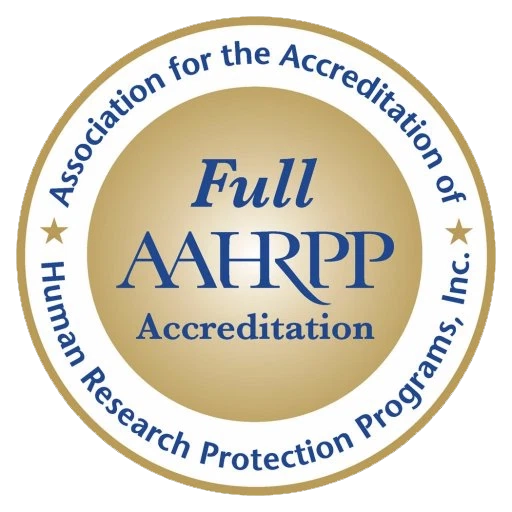Gene Therapy in Action: Thalassemia
Gene Therapy in Action is a digital publication casting an important spotlight on rare diseases and cancers. This series highlights the increasingly critical role of genetic engineering (also called “gene therapy” or “gene transfer”) in the clinical landscape with respect to developing novel and effective therapeutics for the treatment of life-threatening conditions with an urgent unmet medical need.
This blog is for educational purposes only and is not intended to replace the advice of your doctor or other health care provider.
What is Thalassemia?
Thalassemia is a group of genetic blood disorders characterized by decreased hemoglobin production. Hemoglobin is a protein found in red blood cells that allows the cells to transport oxygen throughout the body. People with thalassemia produce fewer healthy red blood cells, which means less oxygen is delivered from the lungs to other cells in the body. This can cause anemia, including symptoms of fatigue, trouble breathing, dizziness, weakness, and pale skin. A person’s symptoms will depend on the type of thalassemia they have and the severity, ranging from asymptomatic to severe disease. More severe forms of thalassemia can cause facial bone deformities, slow growth, abdominal swelling, and dark urine. Severe anemia can damage organs and ultimately lead to death.
Those with severe thalassemia may need regular blood transfusions to provide the body with more red blood cells to carry oxygen. The World Health Organization estimates that approximately 5% of the world’s population carries trait genes for hemoglobin disorders such as thalassemia, and over 300,000 babies are born each year with a severe hemoglobin disorder. The gene mutations that lead to thalassemia are more common in people from Africa, parts of Asia, the Middle East, and the Mediterranean region. These mutations arose as a protective mechanism against malaria, which is more common in these geographic areas.
Diagnosis of thalassemia can occur via a complete blood count, DNA testing, and hemoglobin electrophoresis. In some cases, prenatal testing can also be performed. Most children show symptoms of moderate to severe thalassemia within the first two years of life. People with mild thalassemia typically experience a normal life expectancy, while those with a severe form of the disease may have a shortened lifespan due to heart disease from iron overload, an effect of frequent blood transfusions.
What Causes Thalassemia?
Thalassemia is caused by mutations in the DNA of cells responsible for hemoglobin production. Hemoglobin is made of two alpha-globin proteins (produced from four genes, two from each parent) and two beta-globin proteins (produced from two genes, one from each parent), and a mutation in one or more of the genes that produce these proteins can lead to disease development. Missing or mutated genes related to alpha-globin protein is called alpha thalassemia, while alterations to the beta-globin proteins is called beta thalassemia. Within in each of these two main types of the disease there are three forms: thalassemia major, thalassemia intermedia, and thalassemia minor (or thalassemia trait). A person with thalassemia trait may have mild anemia or no symptoms at all, while a person with thalassemia major may have severe symptoms and require blood transfusions.
Since thalassemia is a genetic disorder, it can be passed on from parent to child. The number and type of affected globin genes, and whether one or both parents are a carrier of the trait, will impact the type and severity of thalassemia a child will experience. A family history of thalassemia would indicate potential for passing along the thalassemia trait. Genetic testing and talking with a genetic counselor as part of family planning can provide guidance on whether a child would be at risk for thalassemia.
Treatment for Thalassemia
Treatment for thalassemia depends on the severity of the disease. Those with thalassemia trait or thalassemia minor typically require no treatment. More severe thalassemia leads to higher hemoglobin deficiency, and thus, more severe anemia. Treatment for moderate–to–severe thalassemia, to combat the anemia, often includes frequent blood transfusions to restore normal levels of healthy red blood cells and hemoglobin. Transfusions can occur as frequently as every two weeks for some patients. Over time, those who receive frequent blood transfusions may experience a buildup of iron in their blood, which, if left untreated, could damage the heart, liver, and other organs. To remove the excess iron from the blood, chelation therapy in the form of an injection or pill may be prescribed. Folic acid supplements may also be provided to help the body produce red blood cells. A stem cell or bone marrow transplant may also be an option for some patients, particularly children with severe thalassemia and a suitable stem cell donor, in which the transplant can eliminate the need for lifelong transfusions and chelation therapy.
Gene Therapy Highlights for Thalassemia
Given the association between mutations in the alpha- and beta-globin genes and the development of thalassemia, gene therapy presents an attractive approach for development of therapeutic strategies for treating the disease. In general, gene therapy, or gene transfer, is the process of introducing genetic material into the body for one of several purposes: to introduce a functional copy of a dysfunctional gene, to silence (i.e. turn off) the expression of a harmful or toxic gene, to introduce gene editing components to correct the disease-causing mutation, or to introduce new or modified genes into the body to help treat a disease. Below we highlight just a few ongoing clinical trials in which various gene therapy approaches are being investigated for the potential treatment of thalassemia.
To date, one gene therapy for transfusion-dependent beta thalassemia has been approved by the United States’ Food and Drug Administration (FDA). Approved in August 2022, Zynteglo® consists of a patient’s own cells modified to produce functional beta-globin. Replacing a mutated protein with a fully functional copy is a common therapeutic approach used in clinical trials. The information on current clinical trials provided below is from publicly available sources and is not intended as advertising or endorsement of any clinical trial sponsor. The status of each trial was accurate at the time of publication.
Highlight #1
Trial Title: The Safety and Efficacy Evaluation of HGI-002 Injection in Patients with Transfusion-Dependent α-Thalassemia
ClinicalTrials.gov Identifier: NCT05851105 Status: Currently recruiting participants
Intervention/treatment: Biological – α-globin restored autologous hematopoietic stem cells (modified with LentiHBA T>C)
Trial Summary: This Early Phase I study is an experimental gene therapy study designed to assess the safety and efficacy of the treatment of alpha thalassemia with the study agent HGI-002, which consists of the patient’s own cells (autologous hematopoietic stem cells) genetically modified with a lentiviral vector encoding functional alpha-globin genes in eligible males and females ages 12 to 35 years. Cells are removed from the study subject and genetically altered with the lentiviral vector ex vivo (outside the body) before being returned to the subject via infusion. This investigational gene therapy is intended to restore the ratio of alpha- and beta-globin, and thus the function of hemoglobin, to alleviate the need for blood transfusions. There are currently no gene therapies for alpha thalassemia.
highlight #2
Trial Title: A Study Evaluating the Safety and Efficacy of the BD211 Drug Product in β-Thalassemia Major Participants
ClinicalTrials.gov Identifier: NCT05015920 Status: Currently recruiting participants
Intervention/treatment: Genetic – BD211 Drug Product
Trial Summary: This Phase I clinical trial is an experimental gene therapy study designed to assess the safety and efficacy of genetically modified human hematopoietic stem cells derived from the patient’s own blood, which have been altered to produce functional beta-globin in males and females ages 5 to 35 years, with transfusion-dependent beta thalassemia. Autologous CD34+ hematopoietic stem cells are transduced with the BD211 lentiviral vector encoding betaA-T87Q-globin provided as a single infusion after myeloablative conditioning. The study agent is intended to provide long-term production of functional beta-globin, eliminating the need for blood transfusions is this population of thalassemia patients.
highlight #3
Trial Title: A Phase 3 Study to Evaluate the Safety and Efficacy of a Single Dose of CTX001 in Pediatric Subjects with Transfusion-Dependent β-Thalassemia
ClinicalTrials.gov Identifier: NCT05356195 Status: Currently recruiting participants
Intervention/treatment: Biological – CTX001
Trial Summary: This Phase III study is a gene therapy study designed to assess the safety and efficacy of the treatment of transfusion-dependent beta thalassemia with the patient’s own cells (autologous CD34+ hematopoietic stem cells) genetically engineered to produce high levels of fetal hemoglobin (HbF) in red blood cells. HbF is the main oxygen-carrying hemoglobin found in the human fetus and is eventually replaced by the adult form of hemoglobin. Cells are modified using a clustered regularly interspaced short palindromic repeats and CRISPR-associated protein 9 (CRISPR/Cas-9) system to precisely edit DNA at the erythroid lineage-specific enhancer of the BCL11A gene. The biological product, called CTX001, is provided as a single venous infusion in male and female children ages 2 to 11 years. This therapy is expected to elevate HbF levels, restoring hemoglobin function and alleviating anemia and the need for transfusions. This drug product is also being investigated as a treatment for the blood disorder sickle cell disease.
For Patients, Family Members and Caregivers
Looking for resources on thalassemia?
- Centers for Disease Control and Prevention (CDC) (https://www.cdc.gov/ncbddd/thalassemia/index.html)
- ClinicalTrials.gov (https://clinicaltrials.gov/search?cond=thalassemia)
- Cooley’s Anemia Foundation (https://www.thalassemia.org/)
- Thalassaemia International Federation (https://thalassaemia.org.cy/)
- World Health Organization (https://www.afro.who.int/health-topics/sickle-cell-disease)
For Sponsors, CROs and Institutions
Interested in hearing how our extensive in-house staff of subject-matter experts can facilitate an accelerated, compliant Institutional Review Board (IRB) or Institutional Biosafety Committee (IBC) review of your gene transfer/gene therapy clinical trials?
Reach out to info@sabai.com or call 1-888-442-2472 to set up a call with our team.



